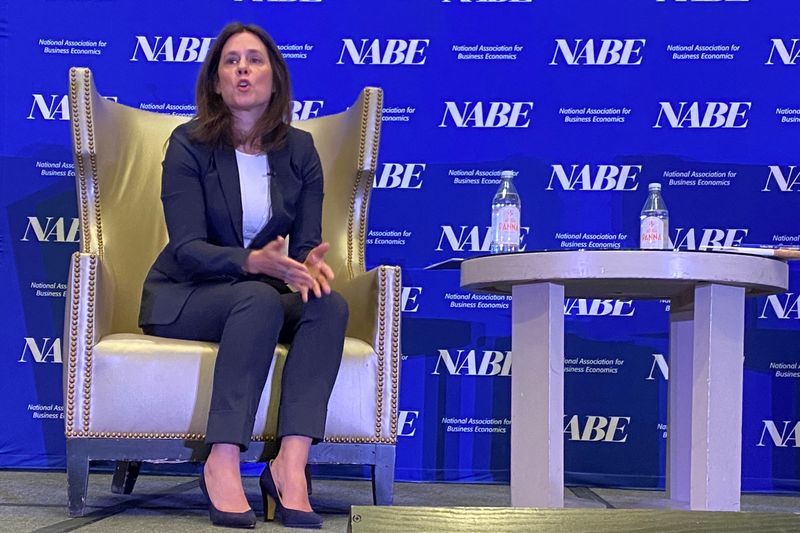(Reuters) – The U.S. central bank should proceed cautiously on further interest rate cuts to keep from inadvertently reigniting inflation, Dallas Federal Reserve President Lorie Logan said on Wednesday.
After having made “a great deal of progress” in bringing down inflation from 40-year highs, Logan said in remarks prepared for delivery to an energy conference at the Dallas Fed, “I anticipate the FOMC will most likely need more rate cuts to finish the journey.”
But, she added, “it’s difficult to be sure how many cuts may be needed and how soon they may need to happen.”
After 75 basis points of rate cuts by the U.S. central bank’s policy-setting Federal Open Market Committee over the last couple of months, the Fed policy rate is now in the 4.50%-4.75% range – “right at the top” of the estimated range of the neutral rate of interest, she said, where the cost of money acts neither as a headwind nor a tailwind to economic growth.
“If we cut too far, past neutral, inflation could reaccelerate and the FOMC could need to reverse direction,” Logan said. “In these uncertain but potentially very shallow waters, I believe it’s best to proceed with caution.”
Logan’s remarks were prepared before the release of government data showing consumer prices rose 2.6% in the 12 months through October, in line with economists’ expectations.
Financial markets responded by boosting bets on another quarter-percentage-point rate cut in December, and on the central bank continuing to cut, albeit at a slower pace, through mid-2025.
Logan did not speak directly to her view on the appropriateness of a rate cut at the Fed’s Dec. 17-18 meeting, but her remarks suggest she is among the policymakers who would prefer to slow down on cuts sooner rather than later.
She noted upside risks to inflation, including from a possible post-election surge in business investment, as well as from consumer spending. Logan said she feels the labor market, with an unemployment rate of 4.1%, is cooling but not deteriorating materially.
And while she said a recent rise in Treasury yields could slow the economy more than the Fed intends, posing a downside risk to employment, she also said that because the neutral rate has likely risen in recent years, Fed policy may not be braking the economy as much as it might appear.
“I am keeping an open mind, scrutinizing economic data and financial conditions, and listening carefully to business and community contacts as I assess what next steps may be appropriate for monetary policy,” she said.

